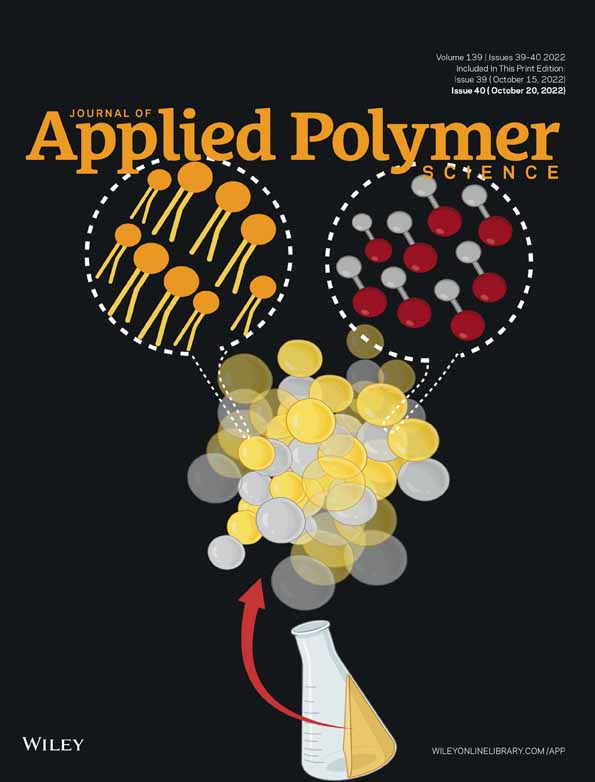Effect of compatibilizer on the structure and property of polycarbonate/polypropylene alloys
Abstract
Polycarbonate/Polypropylene (PC/PP) alloy is a typical thermodynamically incompatible system. In this work, ethylene-methyl acrylate copolymer (EMA), methoxamine hydrochloride-grafted POE (POE-g-MAH), ethylene-butyl acrylate-glycidyl methacrylate copolymer (EAY), a self-made compatibilizer (PPM-g-GMA) of a mixture of glycidyl methacrylate grafted PP (PP-g-GMA) and glycidyl methacrylate-grafted POE (POE-g-GMA) were selected as compatibilizer to prepare PC/PP alloys with the mass ratio of 65:30. Systematical studies of compatibilizer type, content and its effects on microstructure, mechanical properties, dielectric properties, dielectric properties and dynamic rheological properties have been carried out in this PC/PP alloys. The results demonstrated that all the compatibilizers in this article resulted in an effective improvement of the compatibility of PC/PP alloys, and the self-made compatibilizer of PPM-g-GMA exhibited a significant improvement over the other three compatibilizers in notched izod impact strength, tensile strength, and bending strength. In addition, a relative low dielectric constants and dielectric losses under 2.5 GHz electric field could be obtained with the assistance of POE-g-MAH and PPM-g-GMA, indicating its possible application in dielectric materials.
Open Research
DATA AVAILABILITY STATEMENT
The data that support the findings of this study are available from the corresponding author upon reasonable request.




